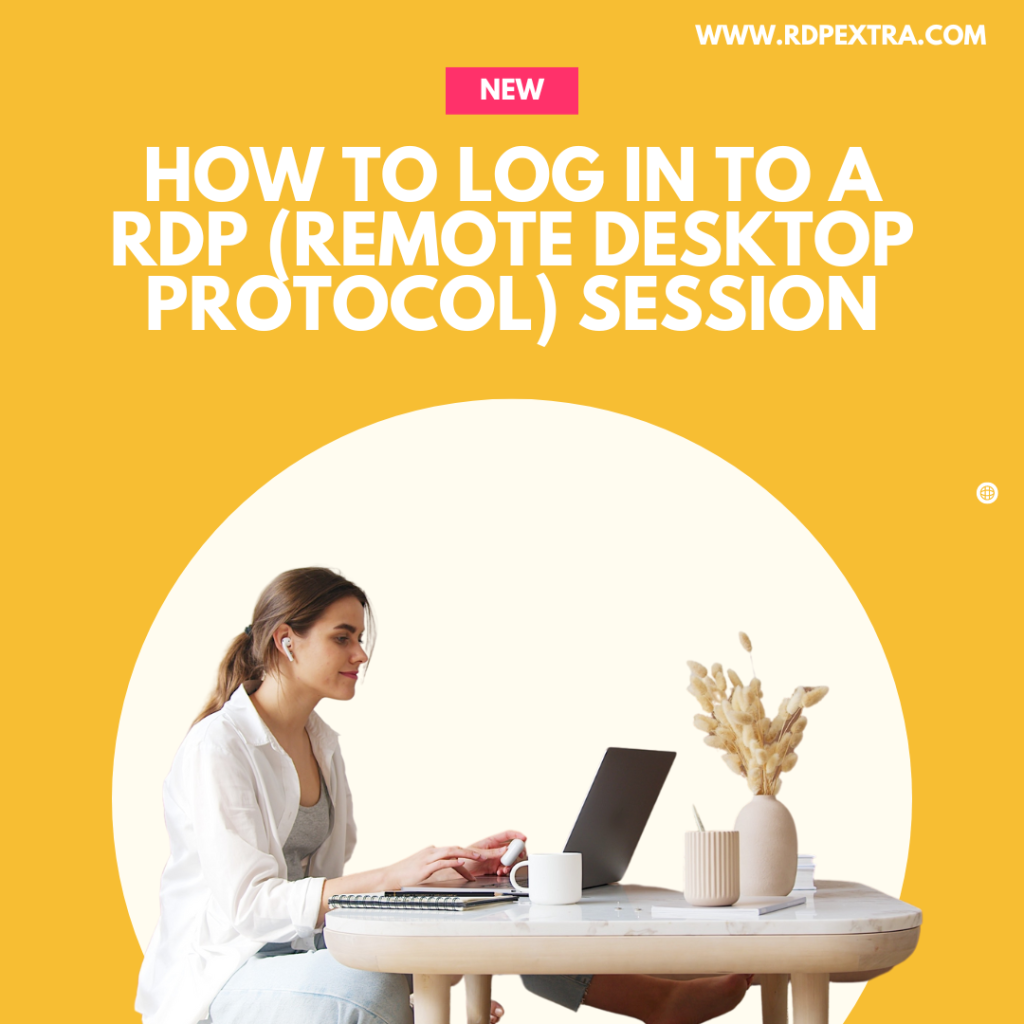Introduction:
Remote Desktop Protocol (RDP) is a powerful tool for accessing and controlling remote computers. This comprehensive guide will walk you through the process of logging into an RDP session, providing step-by-step instructions and insights into the protocol’s functionality.

Understanding RDP:
Before diving into the login process, it’s essential to grasp the basics of RDP. Developed by Microsoft, RDP facilitates remote connections between computers. It allows users to access a remote desktop, making it ideal for scenarios where a physical presence is not feasible.
Prerequisites:
RDP Client:
Ensure that you have an RDP client installed on your local machine. On Windows, the default client is “Remote Desktop Connection,” while Mac users can use the Microsoft Remote Desktop app.
Network Connectivity:
A stable internet connection is crucial. Both the local and remote machines must be connected to the internet.
Credentials:
Obtain the necessary login credentials for the remote computer. This typically includes a username and password with the appropriate permissions.
Step-by-Step Guide:
Step 1: Open RDP Client
On Windows:
Press Win + R, type mstsc, and press Enter. This opens the “Remote Desktop Connection” window.
On Mac:
Use the Microsoft Remote Desktop app, available for download from the App Store.
Step 2: Enter Remote Computer Details
Windows:
In the “Remote Desktop Connection” window, enter the IP address or hostname of the remote computer in the designated field.
Mac:
Open the app and click on “New” to add a new connection. Enter the IP address or hostname here.
Step 3: Provide Credentials
Enter the username and password of the account on the remote computer. Ensure that these credentials have the required permissions.
Step 4: Optional Settings
Explore additional settings by clicking on “Show Options” (Windows) or “Advanced Settings” (Mac). Adjust parameters like display options, local resource sharing, and more.
Step 5: Connect
Click on the “Connect” button to initiate the remote connection.
Step 6: Security Warning (if applicable)
If it’s your first time connecting to the remote computer, a security warning may appear. Confirm and proceed.
Step 7: Remote Desktop Session
Once connected, you’ll see the remote desktop session, and you can start using the computer as if you were physically present.
Logging into an Residential RDP session opens up a world of possibilities for remote collaboration, system management, and more. By following this guide, you can navigate the process seamlessly, ensuring a secure and efficient remote desktop experience. Always prioritize security measures and adhere to best practices when using RDP for remote connections.
Benefits of using Remote Desktop Protocol (RDP) for businesses.
Access Anywhere, Anytime:
RDP enables employees to access their work computers from anywhere with an internet connection, providing flexibility in remote work scenarios.
Cost-Effective:
Reduces the need for physical presence in the office, saving on infrastructure costs and facilitating a more cost-effective remote work model.
Centralized Data Management:
Data remains on the centralized server, enhancing security and making it easier to manage and backup important business information.
Collaboration:
Enables real-time collaboration among remote teams, allowing employees to work together seamlessly on projects.
Security Features:
RDP comes with built-in security features such as encryption and multi-factor authentication, ensuring secure remote connections.
Resource Optimization:
Centralized computing resources on a server reduce the strain on individual devices, resulting in improved performance and resource optimization.
Easy File Transfer:
Streamlines file transfer between local and remote devices, making it convenient for users to access and share documents.
Application Compatibility:
Compatible with a wide range of applications, allowing businesses to run software and tools on remote machines without compatibility issues.
Scalability:
Scales easily to accommodate growing business needs, making it suitable for both small businesses and large enterprises.
Increased Productivity:
Employees can access their familiar desktop environments remotely, contributing to increased productivity and minimizing the learning curve associated with new systems.
Reduced Downtime:
In the event of hardware failures or issues, employees can quickly switch to another device and continue working, minimizing downtime.
Remote IT Support:
IT support teams can remotely troubleshoot and resolve issues on employees’ computers, reducing the need for physical intervention.
Compliance and Auditing:
Simplifies compliance and auditing processes by maintaining a centralized record of user activities, helping businesses meet regulatory requirements.
Customization:
Offers customization options, allowing businesses to tailor RDP settings to their specific security and operational needs.
Enhanced Data Security:
Centralized data storage and secure communication protocols enhance data security, reducing the risk of data breaches and unauthorized access.
Consistent User Experience:
Provides a consistent user experience across devices, ensuring that employees can work with familiarity regardless of their location.
Adopting RDP can significantly enhance a business’s operational efficiency, especially in a world where remote work is becoming increasingly prevalent. Buy RDP from a reputed brand like RDP Extra for excellent performance.
Leave a comment